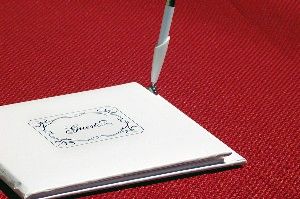Anita Jo Intenzo
Author, ESTATE OF HORROR and DARK TRANSFERENCE
Entrepreneur, PAST IMAGES BY ANITA
Author, ESTATE OF HORROR and DARK TRANSFERENCE
Entrepreneur, PAST IMAGES BY ANITA
Main Navigation
Fashion Dolls
German and French Fashion Dolls
 The best known group of antique dolls are the German and French bisque dolls. These dolls were produced from the 1840's until after World War I, with the amount of production and number of manufacturers increasing significantly around 1860.
The best known group of antique dolls are the German and French bisque dolls. These dolls were produced from the 1840's until after World War I, with the amount of production and number of manufacturers increasing significantly around 1860. The years from 1860 through 1890 were dominated by fashion dolls. These dolls were made to represent ladies, and they were dressed in exquisite, elaborate reproductions of current fashions. Most were made in France (frequently from heads produced in Germany, although Jumeau and Bru produced their own heads) with inset glass eyes and woman-shaped kid bodies, by companies such as Jumeau, Bru, Gaultier, Rohmer and Huret.
Fashion dolls, despite their elaborateness, were definitely playthings. Little girls, usually from affluent families since these dolls were quite expensive, would perfect their sewing skills by creating wardrobes for their dolls. Often these dolls would come with entire trunks of clothes and accessories! In fact, an entire industry existed to costume and accessorize these dolls; it was found in the Passage Choiseul area of Paris. These businesses included seamstresses, milliners, shoemakers, jewelers and shoemakers.
They also learned about the importance and substance of fashion for mid-19th century women. Magazines instructed girls on the proper fashions and also provided patterns for making clothing.
Today, fashion dolls are very expensive to collect, varying in price from around $2,000 for unmarked or later dolls, and up to $20,000 or more for Hurets and rare examples in original outfits.
Next: French Bebes


Do you have a doll that needs restoration? Would you like to learn more about dolls and their history?
Contact Anita for more information.


You are cordially invited to sign Anita's Guestbook. Say hello and share your thoughts here!